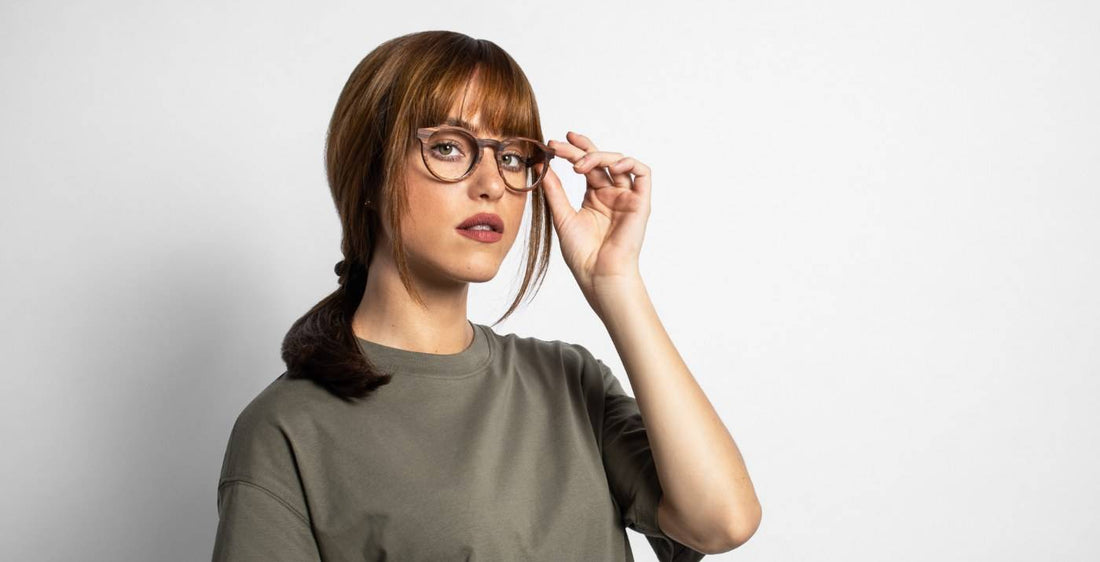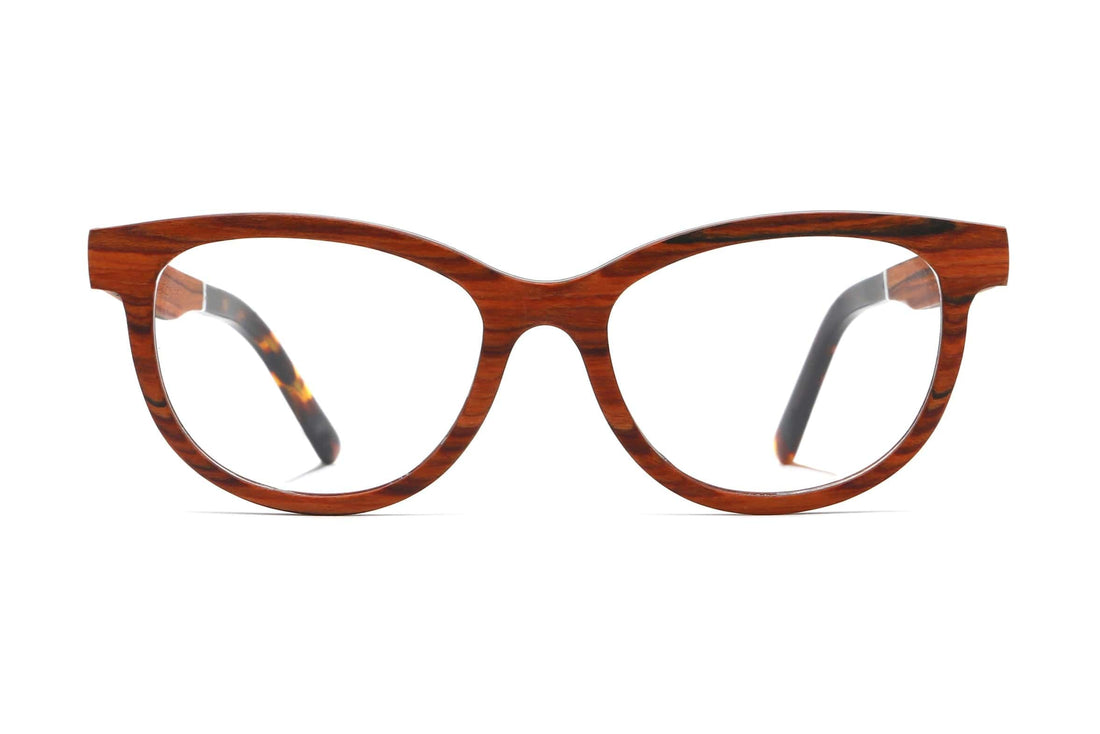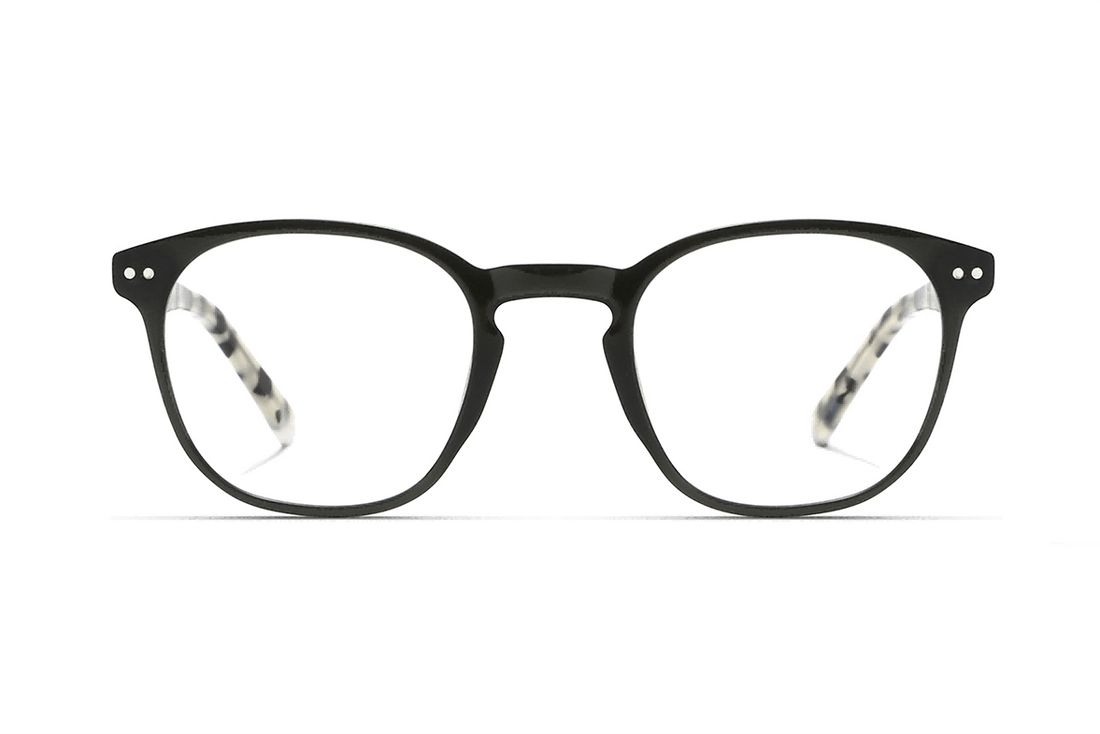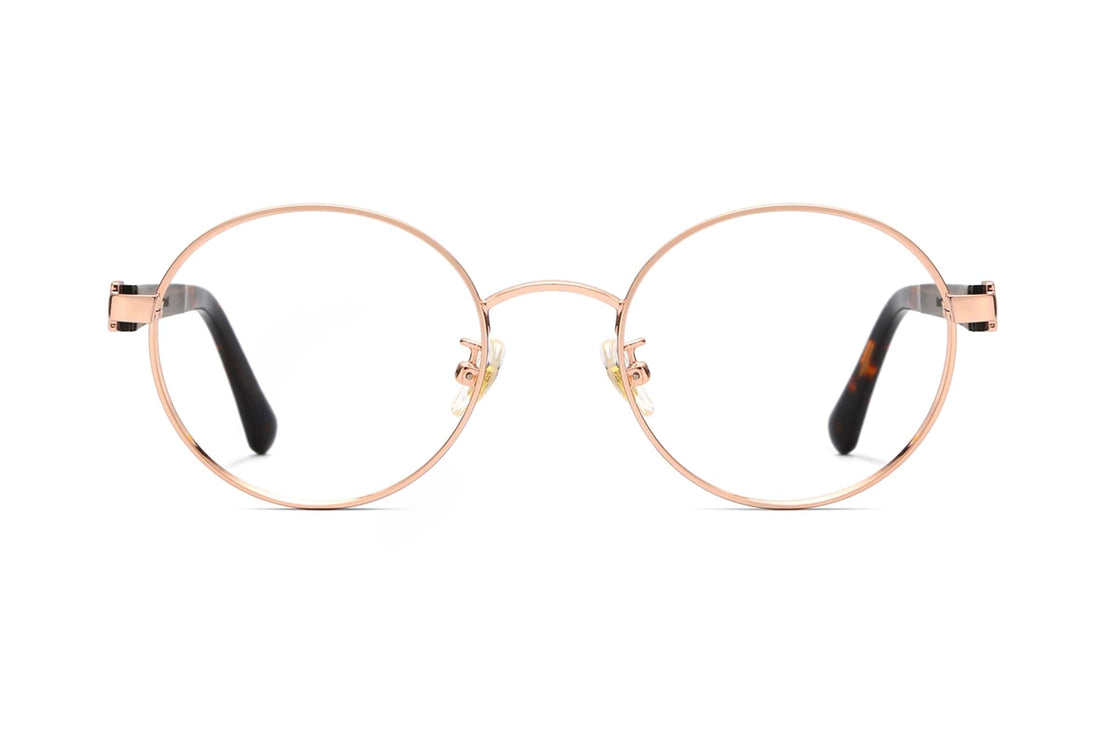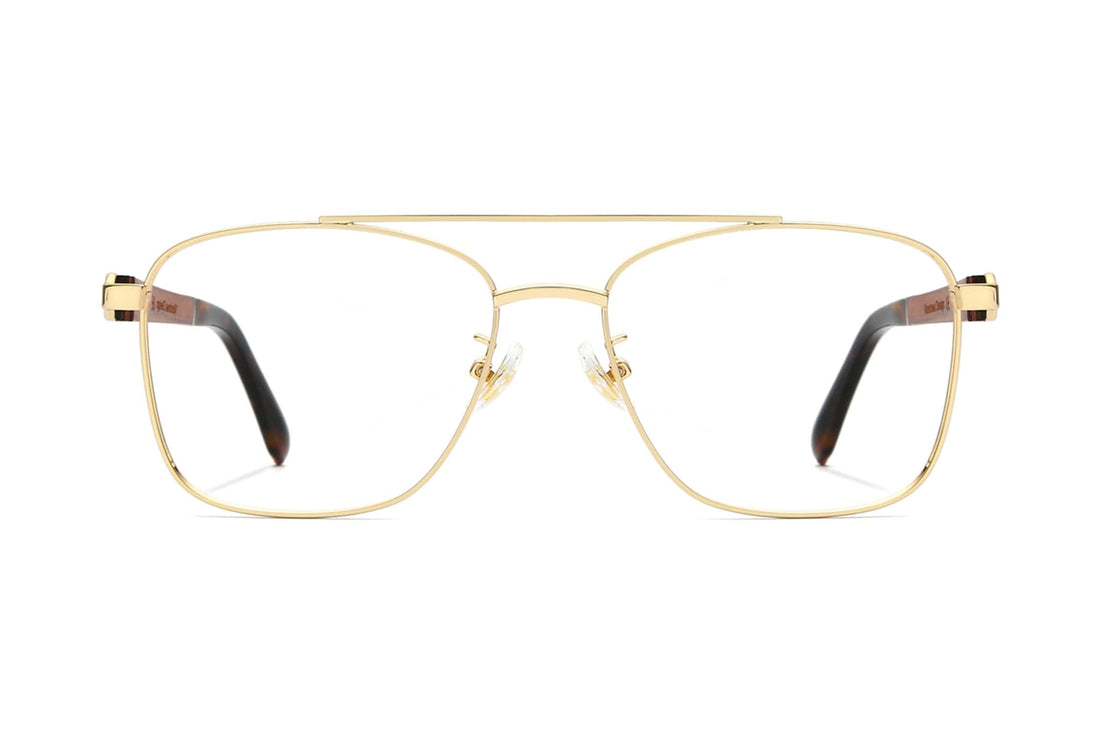
How to Adjust Glasses Properly: Tips for a Perfect Fit
How to Adjust Glasses Properly
8 min read • Posted on 22 October 2024
Are you agonizing about your glasses? Are you stuck in a trial-and-error cycle, desperately trying how to adjust glasses to position heads, ears, and temples to move the bridge up your nose or stop the frames from slipping repeatedly? You’re not alone, which is lucky because most of the problems caused by ill-fitting spectacles are easily diagnosable and fixable yourself.
You could make a beeline for the optician, but you’d only need to wait until you’ve checked out this article first. The advice here is helpful if yours is newly bought or second-hand. Whatever you do, be patient: forcing glasses into submission is a disaster. Hopefully, this analysis and instructional guide will help you master how to adjust sunglasses or prescription glasses at home.
Common Problems That Require Glasses Adjustment
Glasses That Slip Down Your Nose
Arguably the most universal source of discomfort among glasses-wearers, those buggers slipping down your nose is rarely more than a grievance, the product of oily skin or bouncy frames that are just a little too loose. You might need to bend the nose pads outward or inward (if your specs have them), then tighten the temples to hug the back of your ear. With plastic frames, be prepared to apply some heat. A few judicious tweaks will stop the cycle of pushing your glasses up to their rightful place every few minutes.
Your glasses may slip off your nose despite adjustments. Your frame’s weight may be too great for your nose bridge. Lighter frames may be a good idea, or you can put silicone nose pads on the spectacles. It’s not just irritating; excessive force on the glasses slide off, and the associated blur also puts unnecessary strain on your eyes if the lenses have moved away from their optimal position for viewing.
Frames Sitting Crooked or Uneven
Bent or crooked glasses are another common scourge. If you find one of the temples, the arms of your glasses, grounding further into your ear or resting lower than the other on the opposite hand of your face, it’s a good bet that the frame has been bent slightly or shifted out of alignment.
To fix this, hold the frames firmly in the dominant hand and gently bend the higher side of the left temple straight downward toward the frame’s front until the frames sit straight and even on your face. (These sorts of adjustments are usually OK with metal frames, as are often the glasses of choice, but although plastic frames also work, they take a bit more care and usually some heat.)
In addition to looking odd, uneven glasses give you a fish-eyed view of the world. Ideally, the lenses of your glasses have to sit in the correct position, precisely in front of your eye. If you have crooked frames, it is best to correct them immediately. If straightening them doesn’t help, then it may be time to find a professional. Otherwise, you’ll overbend your glasses and may risk them breaking.
Pressure or Pain Behind Your Ears
The most common reason is discomfort or pressure behind your ears. If the temples are too tight around your ears or curved in the wrong direction, slightly bending the glasses outwards will create more breathing space. This is quickly done for metal frames, but it’s a good idea to soften the plastic by holding it with a hairdryer first if you don’t want it to crack or split.
Chronic skin irritation behind your ears, headaches, and digging-in pain are the results. If repositioning the glasses at home temples doesn’t bring relief, the glasses might need to be reshaped by a professional. If you wear glasses that are too small for your head, pain and irritation are bound to give you trouble. If you still face the same discomfort, you might want to upgrade to a more oversized frame.
How to Adjust Metal Frames vs. Plastic Frames
Adjusting Metal Frames Without Heat
Metal glasses frames are generally easier to fix as they are more pliable. No heat is needed to adjust plastic frames; just a bit of pressure will do. If your frames are too broad or sit too low on your face, bend the temples inwards or raise the nose pads. An easy way is to use your hands to make the adjustments, but often, a pair of needle-nose pliers is handy for more precise changes.
Adjusting plastic frames using heat
Plastic or acetate glasses frames, on the other hand, need heat to become flexible enough to adjust. Give the temples or nose bridges a few seconds with your hairdryer or a bowl of hot water to warm them up slightly. This will make them bendable, and once you bring them back to room temperature, they should hold their new shape once cool. Don’t overheat plastic frames, as you risk warping and damaging them.
Because plastic eyeglasses frames are much harder to adjust than metal ones and fixing poorly fit plastic frame glasses can be challenging once the plastic has cooled and hardened, it is best to allow a professional with the right tools and skill to reshape plastic frames to fit perfectly. If you are uncomfortable using a heat source, bring the non-adjustable eyeglass frame to a store with someone comfortable reshaping plastic frames to avoid damage.
Tools You’ll Need for Adjustments
These are just the bare essentials, enabling you to perform basic at-home adjustments. Nothing will be more essential for metal frames than a pair of needle-nose pliers, which allows you to make tiny, precise tweaks. Plastic frames, however, require a hairdryer or a bowl of hot water to soften the plastic before you can bend it. A small screwdriver is also necessary for tightening the screws, which will inevitably become loose with daily use.
When your glasses start slipping down your nose, ensure you’re working on a flat surface so they don’t get dropped and scratched. If adjustments are a regular occurrence, it pays to invest in an eyeglass repair kit, which includes all of the tools you’ll need on hand. Often, you can save an expensive pair of glasses from needing a costly fix by maintaining it yourself.
Adjusting Glasses That Are Too Tight or Too Loose
Bending the Temples for a Tighter Fit
Tightening up the temples will tighten up a loosely fitting pair of glasses that tend to slide down the bridge of your nose. Bending the metal portions of the left temple arm that rest behind your ears inward and snug into place as much as possible will help them stay in place better. You can do this with your hands by hitting the temples with your thumbnails.
Still, if you have a thin screwdriver or something similar handy, you’ll get even better results by applying steady pressure to a small area of the metal temples while forcing the metal inwards out of the frame. If you have plastic frames, the easiest way to expand and loosen up the arms to fit better is to heat the areas where the arms wrap around your ears and bend them so they snap into a better shape.
Loosening the Temples Without Damaging the Frames
To temporarily fix tight glass temples, loosen them. Sometimes, glasses can get too tight. If one lens or both glass's temples feel cakey, moldy, and taunt, loosen them incrementally before they make your head hurt. For metal temples, pull the temple outward. For plastic glasses, use warm water or a hairdryer to heat the temples and slowly bend them outward, taking a millimeter at a time. Check fit often after an initial bend, or you can over-loosen your glasses, making them too loose.
Plastic frames are especially vulnerable to overbending, so take your time and check the fit frequently. Err on the side of caution if you aren’t sure how far to nudge, which is often the case on a repair for repair. Move things a bit at a time rather than trying to correct everything all at once.
When to Stop and Test the Fit
After each adjustment, take a moment to check fit. Put the glasses on and wear them for a few minutes to see how they feel. You can adjust a little more if they aren’t quite right yet. Plastic frames can sometimes change shape slightly as they cool down, so allow them to cool completely before testing.
Testing the fit often will also help to avoid over-tighten glasses, which can weaken the frames or cause stress to the material. Continuous yanking followed by no improvement in fit is a red flag. If you can’t get the fit quite right, by all means, find a professional with corrective measures.
How to Fix Nose Pads for Better Comfort
Adjusting Nose Pads for Height
Moving the glasses up or down on your face by a centimeter is often enough to make a massive difference to the fit if your nose pads are too high or too low. Your metal frames’ adjustable nose pads are likely all you’ll need to adjust your glasses. Bend these backward and forwards with your thumbnail or a suitable, inexpensive spectacle adjustment tool. Bending them backward will lower the glasses on your face, whereas bending them forward will lift them. Again, make tiny adjustments, then test the fit after each one.
Nose pad height is another feature that affects your ability to see through your glasses. Too low a bridge or left lens, and you may severely distort or even ‘cut off’ your vision, especially when wearing progressive lenses. If you raise or adjust them a little, you will likely be pleasantly surprised by the satisfying new fit and ‘feeling’ of the lenses to the eyeballs.
Loosening or Tightening Nose Pads
If the pads, which should sit on either side of your nose, are too tight or loose, a little tweak can make them more comfortable. If they’re pinching a little, make the gap between the glass arms and the pads wider; if they’re sliding down your nose when you put them on, make that gap between adjusted glasses slightly smaller by bending them towards each other a bit like a butterfly’s proboscis. This tips the glasses back and redistributes the weight more towards the bridge of your nose instead of the pads.
Comfort is also a concern here, as a pressure point where your glasses frame sits on your nose can quickly become sore or leave a red mark where the glasses rested. Playing with the nose pad and changing their size to a more comfortable fit to the contours of your face will ensure a better fit and wearability over the day.
When to Consider Replacement Nose Pads
Sometimes, pads aren’t up to the task, especially when they become old and worn. Even if you make a lot of adjustments, you might still find that cracked, discolored, and uncomfortable pads need to be replaced.
Nose pads can seem humdrum, but some are made entirely of silicone and some of gel, which might provide an improved and longer-lasting sensation of comfort compared with smaller plastic nose pads closer together. Too narrow or ill-fitting nose pads can be easily replaced at a meager cost by you at home or by a few minute's visit to your optician (free or cheap).
Final Tips for Maintaining Your Glasses
Regular maintenance for frame longevity
Keep them in good shape if you want them to last: daily cleaning (with a microfiber cloth and a lens cleaner) will reduce scratching and smudging, and regular inspection of frame fit will allow you to make minor adjustments before the problem worsens. Keep plastic frames away from extreme heat, which can cause warping or cracking.
Caring for your glasses is not as important as you first suspect; care helps you keep your glasses looking new, saving you money on repairs or replacements that would otherwise be necessary. A shriveled cornea is required in one’s life, so you must care for your glasses to continue being able to rely on them and keep them in good condition so that you can see clearly over the long term.
Keeping Screws Tight and Secure
Gone are the days of having to tote around loose eyeglasses screws that caused wobbly. The trouble with loose screws can be easily a small eyeglass screw to tighten the screws periodically.
Frames will hold tight. If your screws seem to be tightening regularly, you might go for a minimal amount of clear nail polish or thread-locking adhesive to keep them tight.
When to Seek Professional Help
Some decisions can be made right away at home; for example, balanced frames work fine, but if frames are very badly bent, cracked, or compromised in their integrity, more extensive adjustments should be made at the optician’s; that is, they could potentially break if not repaired by an optician. Many opticians have Louisville-style benders to correct corrugated frames or twister-wrench to fix bent wires of slower-paced and vintage frames.
Try all the adjustments above, but a professional adjustment could do the trick if your glasses still aren’t fitting correctly. And if they don’t, ask for a professional adjustment. It’s your right to have your glasses fit and look good, and if they don’t, you will find it hard, if not impossible, to see correctly and might even experience headaches. It’s annoying, frustrating, and uncomfortable.
By now, you (hopefully) know how to make this adjustment. Your specs should now feel better on their frames, and you should notice that what is, after all, everyday wear is a little less tolerable. You’ll have to continue making these minor adjustments until they are right. And that, my friends, is what braille looks and feels like.
Please note that if your frames are not working out or you can’t be sure what to do, it’s always best to get a professional opinion. But if it’s just some minor repairs, you can do them.
 Heba Ahmed
Heba Ahmed






